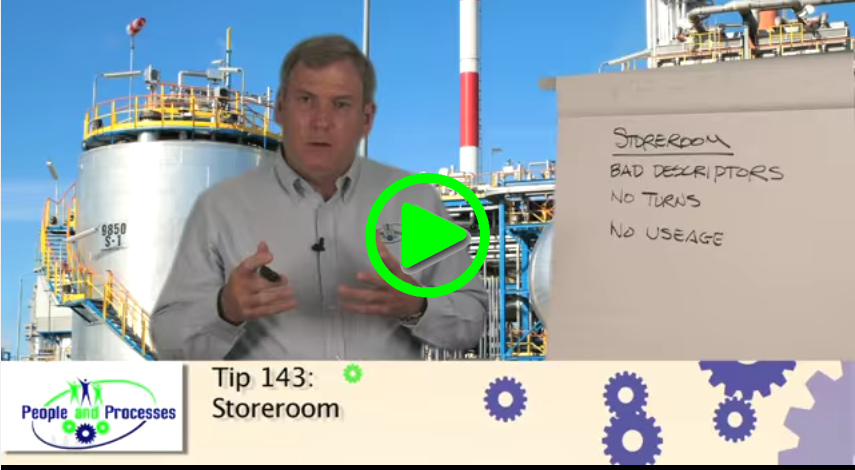|
Hello, I'm Jeff Shiver, Managing Principal of People and Processes. I wanted to share some tips with you today around the storerooms, more specifically, regarding your naming descriptions for your parts or your inventory, if you will.
|
|
Many times I see that people haven't followed correct naming conventions. You might say, "Okay, that is just one struggle within the stockroom." Realize that it drives other behaviors as well.
What happens is people can't find the parts in the stock room by the descriptor. For example, you may have it listed as a four-way valve, a solenoid valve, a pneumatic valve. Now, we can't find it, especially if you scatter items across the stock room. Rather than putting common parts together you store something in the first hole in which it fits, and now I can't look and find anything collectively from one area to the next. So, we spend time walking the entire store room.
|
|
What happens with that is your planners can't find it either. When they are trying to order a part, they can't find it in the stock room, so they go outside the stock room and they buy it from external sources. Now we can't get inventory turns because we aren't taking anything off of the shelf, it's just going stagnant or obsolete. We are not able to show any usage either because now it's not really an inventory item.
|
|
Ideally what we want to do is create things with non-stock part numbers, even though we might not stock them. And when we buy it through the computerized maintenance management system, or through the stock room if you will, now we can track usage. We can understand how many we purchase during the course of the year. Is this something that we need to stock or not?
|
|
One of the other problems we have are go cards or P cards, purchasing cards. When we use purchasing cards, we go outside of the stock room system and the computerized maintenance management system too, and now we can't tie those individual parts back to assets. Sure it is easier, you are bypassing the hurdles of procurement, and stuff like that. I understand that, but the problem is we can't track it.So we don't understand whether this is an item that we need to stock or it is an item that we don't need to stock.
By the same token, the items that we do have in stock that are similar items to that we are buying on the outside, we can't get any movement. So they show up on a slow moving inventory list if you will, and then they get chunked out even though we might very well need them as critical spares.
|
|
Hope you enjoyed the tip. I'm Jeff Shiver with People and Processes. Have a great day.
|

